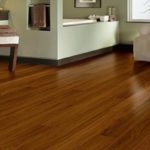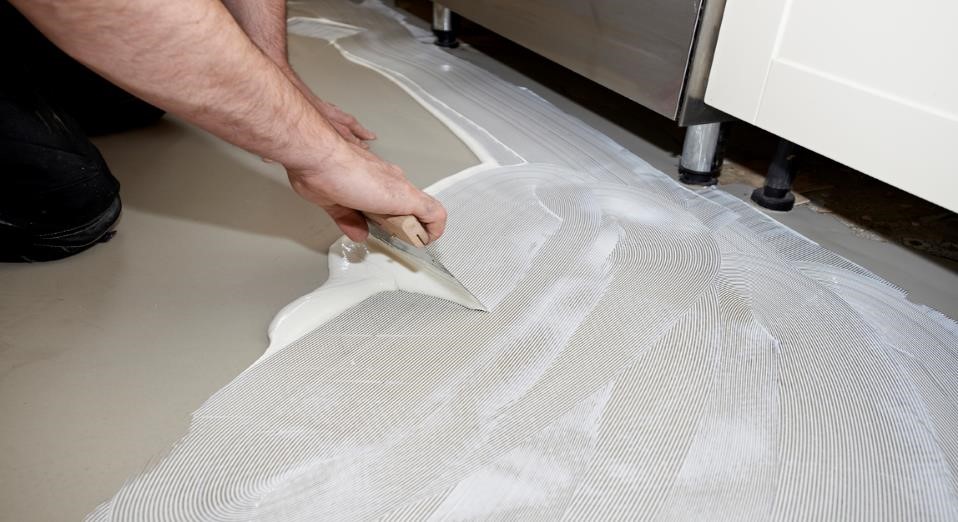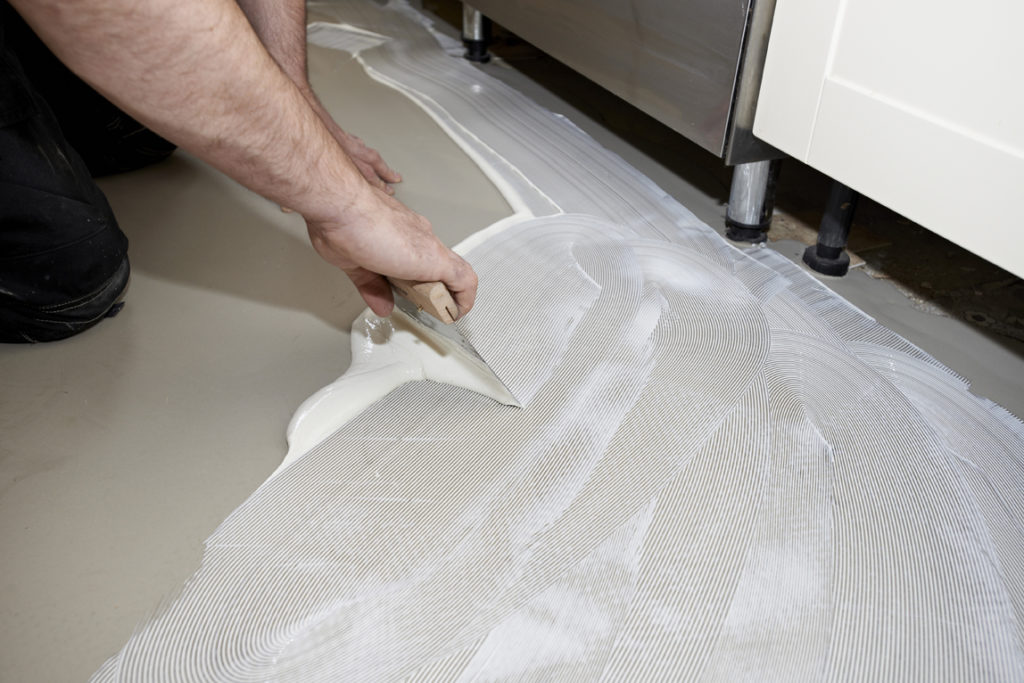Resilient Flooring

Resilient floor coverings are highly engineered sheet and tile products, made to withstand heavy use in a variety of commercial and residential buildings.
Different environments call for different floors. While resilient flooring is manufactured in many styles and materials, with a range of performance qualities, they are known for being easy to maintain, hygienic and comfortable underfoot. A resilient floor benefits a building through its design and performance.
BENEFITS OF RESILIENT FLOORING
Resilient floors are firm, but give or “bounce back” which make them the preferred choice of healthcare and education designers. Urethane floors possess less elasticity than other materials, whereas resilient floors offer degrees of flexibility under foot, providing more comfort than many other hard surfaces.
Benefit highlights include:
- Saving money on replacing easily-worn floors. Resilient floors are durable and long-lasting.
- Providing comfort under foot to keep users healthier and happier.
- Achieving noise-reduction in places like schools and public places.
- Choosing a custom appearance – your choice of design, patterns, finishes, and colours.
Some of the product families are:
- Vinyl or PVC Floor Covering
 Poly Vinyl Chloride (PVC) or ’Vinyl’ floor coverings are widely used in both commercial and residential environments.
Poly Vinyl Chloride (PVC) or ’Vinyl’ floor coverings are widely used in both commercial and residential environments.
Types of PVC or Vinyl flooring:
Homogeneous
This flooring has one homogeneous, or a single product layer of PVC sheet, created through heating and melting PVC pellets, in varied colors and weights, which under pressure and extrusion create decorative patterns. This is glued directly to a subfloor, often installed in heavy traffic commercial spaces.
Heterogeneous
Featuring different layers of PVC and other polymers or strengthening products, heterogeneous flooring is laminated together under heat and pressure. An embossed, transparent top wear layer and backing layers are used for dimensional stability to protect layers of printed films and coloured sheeting, creating highly detailed designs in sheet and cut plank and tile formats. The addition of a glass or polyester fleece layer acts as a carrier. Heterogeneous flooring is glued to subfloors or loose laid across interior spaces. This forms a continuous finished resilient floor covering. Hospital operating rooms i.e. for all those rooms where the bacterial growth is a concern make use of these flooring. This hence promotes resistance to higher water penetration, as water and moisture are favorable conditions for bacterial growth.
2. Linoleum Floor Covering
 Linoleum consists of binder, pigments (dyes) and fillers selected on jute substrates. The main raw materials in linoleum binder are oxidizing and polymerized linseed oil products and resins. The fillers can be wood flour, cork flour and mineral fillers. Available in sheet and tiles products. Manufactured for over 100 years and renowned for its durability, practical maintenance regime and easy installation, linoleum has a natural bacteriostatic quality that inhibits the growth of bacteria.
Linoleum consists of binder, pigments (dyes) and fillers selected on jute substrates. The main raw materials in linoleum binder are oxidizing and polymerized linseed oil products and resins. The fillers can be wood flour, cork flour and mineral fillers. Available in sheet and tiles products. Manufactured for over 100 years and renowned for its durability, practical maintenance regime and easy installation, linoleum has a natural bacteriostatic quality that inhibits the growth of bacteria.
Originally used in health care and education facilities, linoleum can also be installed in offices, retail outlets, leisure, hospitality and transportation. Linoleum can be supplied for installation in rolls, as well as modular planks and tiles format.
3. Rubber Floor Covering
 Floor coverings made with caoutchouc, also known as natural rubber, are commonly known as rubber or elastomer floor coverings. Produced through vulcanisation, natural and/or synthetic rubber is mixed with a natural filling material, often chalk flint, environmentally compatible pigments and additives. Due to its elastic properties, these floor coverings do not require any plasticizers, and are identified as part of the non-PVC category. Rubber is produced in many colors, patterns and structures, and bespoke customer designs
Floor coverings made with caoutchouc, also known as natural rubber, are commonly known as rubber or elastomer floor coverings. Produced through vulcanisation, natural and/or synthetic rubber is mixed with a natural filling material, often chalk flint, environmentally compatible pigments and additives. Due to its elastic properties, these floor coverings do not require any plasticizers, and are identified as part of the non-PVC category. Rubber is produced in many colors, patterns and structures, and bespoke customer designs
Suitable for high traffic commercial and industrial areas, such as warehouses, production plants or electrostatic protected areas, rubber also has excellent ergonomic and acoustic properties.
4. Carpet Tiles
 Carpet tiles, also known as modular carpets or square carpets, are squares cut from wall to wall rolls which can be fitted together to make up a carpet. The carpets are interweaving of a carrier layer consisting of woven jute, synthetic material or a thin synthetic felt layer of polypropylene, polyester, or fiber glass. As a reinforcement, a backing of jute, synthetic fabric, synthetic felt layer, rubber (latex) or plastic pulp is applied.
Carpet tiles, also known as modular carpets or square carpets, are squares cut from wall to wall rolls which can be fitted together to make up a carpet. The carpets are interweaving of a carrier layer consisting of woven jute, synthetic material or a thin synthetic felt layer of polypropylene, polyester, or fiber glass. As a reinforcement, a backing of jute, synthetic fabric, synthetic felt layer, rubber (latex) or plastic pulp is applied.
Some carpet tile providers also offer other shapes and sizes like hexagons and triangles with which the installation, however, does increase in complexity and cost. Carpet tiles are justly popular as a flooring option for commercial environments, such as bars and restaurants, and other relatively uncomplicated projects.
5. Luxury Vinyl Floor Covering
 Luxury Vinyl flooring is the most prestigious of all the forms of vinyl flooring, and if applied right, it can actually add real estate value to any home. It is manufactured in long planks known as Luxury Vinyl Plank flooring or tiles known as Luxury Vinyl Tiles. Luxury Vinyl Tiles (LVT) are designed to resemble ceramic or stone tile, and they are a popular flooring option.
Luxury Vinyl flooring is the most prestigious of all the forms of vinyl flooring, and if applied right, it can actually add real estate value to any home. It is manufactured in long planks known as Luxury Vinyl Plank flooring or tiles known as Luxury Vinyl Tiles. Luxury Vinyl Tiles (LVT) are designed to resemble ceramic or stone tile, and they are a popular flooring option.
Common Problems with Resilient Floor Installation
Because of the sensitive nature of some floor coverings, your subfloor may require a lot of additional preparation if it is uneven or wavy. If you are dealing with a particularly uneven subfloor, that can lead to lifting of the flooring’s edges and joints. If this is the case with your space, you can add a self-levelling mix.
Moisture is a big problem that can affect flooring and cause curling, cupping, lifted edges, and dimensional instabilities. Another aspect to consider is the place when you install floor coverings because it can be greatly influenced by heat and cold, and it will expand and contract, depending on the external temperature.
SUBSTRATE PREPARATION
Before starting any flooring works – substrate should be properly assessed and prepared. Substrate preparation consist of few very important steps to be done before proceeding further with any flooring installation works.
- Moisture Measurement
The floor installer must ensure that the floor covering can be installed without the risk of later bumps and blisters. It is therefore part of his duties to check whether the substrate is sufficiently dry before any further flooring installation works are done.
- Substrate Cleaning
The substrates must be clean, crack-free, sound, dry, free of substances that may impair adhesion (such as grease, bitumen, dust, etc.) and must comply with the relevant local standards. The existing dirt, weathered layers and paint coatings of low strength should be mechanically removed. Removing of old material residues is done with screed-grinders, shot-blasters or other special tools.
- Priming / Creating Moisture Barrier
The next important step is priming. Absorbent and Non-absorbent substrates should be primed with P 51 & Ardex P 7 respectively. Before levelling compound installation – residual moisture in the substrate and its strength must be carefully checked. In case of moist or weak substrates special primers have to be applied.
4. Crack Repair & Underlayment
Cracks can be expertly repaired with F 30.
Underlayments do not get a chance to see the light. Their main purpose is as a thin topping to level, smooth, or fix imperfections in concrete substrates prior to installation of other floor coverings, such as tile, carpet, or vinyl etc. An underlayment flows onto floor surfaces like thick pea soup and requires minimal effort to smooth and level.
Despite their undercover status, underlayments require the care in installation. Inadequate concrete surface preparation and priming might lead to severe pinholing or bubbling that could actually show through on floor coverings.
Unevenness or Undulations in the substrate should be filled with CL 11 or K 301
ADHESIVES FOR RESILIENT FLOORS
 Key Points for the Installation
Key Points for the Installation
Prior to the installation of luxury vinyl tiles or planks please refer to the manufacturer’s guidelines on product condition. Failure to follow the product conditioning guidelines can result in shrinkage or lipping.
- Product conditioning should always take place in the area that will receive the installation.
- The tiles, planks and any other flooring accessories should be conditioned together for a minimum of 24 hours prior to installation.
- In line with BS 8203:2017 codes of practice, the room temperature should be between 18°C and 28°C, staying constant and not varying by more than 2°C.
- The product conditioning time should be increased to 48 hours where the luxury vinyl tiles or planks have been stored and/or delivered at colder temperatures, lower than 10°C.
- Areas subject to high solar gain such as conservatories, extension areas with bi-fold doors and windows, should be shaded or covered during the product conditioning period, installation period and for 24 hours after the installation.
ARDEX SYSTEM SOLUTIONS FOR RESILIENT FLOORING INSTALLATION
Adhesive Application
- The ARDEX Adhesive should be applied evenly using the appropriate serrated trowel, held approximately at a 60-degree angle to the subfloor to maximise coverage and avoid forming pools of adhesive.
- Allowing the adhesive to air will help to reduce lateral slide and adhesive squeeze when installing luxury vinyl tiles or planks.
- Only apply sufficient adhesive that can be covered within the working time.
- Remove any air pockets with a cork board or rubbing tool whilst the adhesive is still wet and roll the flooring with a 68kg roller and/or a smoothing tool. Roll from side to side first and then end to end. Rolling will ensure good overall contact and minimise the potential for adhesive serration grin through.
- If you are installing Luxury Vinyl Tiles in areas of direct sunlight, such as conservatories and extensions, ARDEX recommends the use of ARDEX AF 2575 Heavy Duty Adhesive.

| Ref | PRODUCT | DESCRIPTION | COVERAGE | PACK SIZE | |
| A | SCREED | ||||
| a) | A 3 | Screed concentrate | 1:6 ratio – 6.90m² @ 20mm thick | 500 g | |
| b) | A 37 | Pre-bagged, proprietary screed cement | 1:6 ratio – 4.0m² @ 20mm thick | 25 kg | |
| B | PATCH REPAIRS | ||||
| a) | A 45 | Rapid drying and hardening internal repair mortar | Approx. 7m² @ 1mm thick | 11 kg | |
| b) | Feather Finish | Rapid drying patching and smoothing compound | Approx. 50m² as skim coat @ 200 microns | 11 kg | |
| C | PRIMERS | ||||
| a) | P 51 | Concentrated water-based primer and bonding agent | 1 part P 51+1 part water – 33m²
1 part P 51+2 parts water – 60m² 1 part P 51+3 parts water – 100m² |
5 kg | |
| b) | ARDEX PU 30 | Primer & Moisture Barrier | 100 – 150 g/m² in one coat (Primer) 250 – 300 g/m² in two coats (moisture barrier) | 11 kg | |
| c) | ARDEX P 7 | Ready-to-use Primer for Non-Absorbent Substrates | 100-150 g/m² per pack | 12 kg | |
| D | UNDERLAYMENT | ||||
| a) | CL 11 | Commercial grade, Internal self-levelling compound | Approx. 5m² @ 3mm thick | 25 kg | |
| b) | K 301 | Fast Setting Resurfacing and External Levelling Compound | Approx. 3m² @ 5mm thick | 25 kg | |
| E | FLOORING ADHESIVES | ||||
| a) | ARDEX AF 148 | All Purpose Flooring Adhesive | Covers up to 76m2 | 10 kg | |
| b) | ARDEX AF 325 | Carpet Adhesive | Covers up to 35m² | 14 kg | |
| c) | ARDEX AF 620 | Solvent free Contact Adhesive | Covers up to 25m2 | 2.5 kg | |
| d) | ARDEX AF 825 | Surface Tackifier for fixing carpet tiles on raised access floors | Covers up to 125m² | 10 kg | |
| e) | ARDEX AF 2270 | Universal Conductive Adhesive for Anti-static PVC Floors | 400-450 g/m2 (S 2 trowel)
250-300 g/m2 (P 7 trowel) 500-550 g/m2 (P 25 trowel) |
18 kg | |
| f) | ARDEX AF 2365 | Universal Flooring Adhesive | Covers up to 67m2 | 14 kg | |
| g) | ARDEX AF 2525 | Two Component Heavy Duty Adhesive for wet areas | Covers up to 20m2 | 6 kg | |
| h) | ARDEX AF 2575 | Heavy Duty One Component Adhesive where there is high solar gain | Covers up to 23m2 | 7 kg | |
Please refer adhesive selector chart for different floorcoverings and for different situations https://www.ardexendura.com/wp-content/uploads/2020/02/Ardex-Endura-Flooring-Adhesives-Brochure.pdf
ARDEX ENDURA ACADEMY
Our industry, like any other, requires on-going training to keep up with the changes in legislation/standards and materials. Our purpose-built training facility enables us to offer a range of demonstrations and seminars that can be tailored to your specific needs, ensuring total confidence in the specification and subsequent on-site application. The academy allows you to learn about new technologies including ‘Industry best practices for Tiling, Waterproofing, Concrete Repair and Flooring’ along with Technical guidance and product information.
For the latest and most up to date information and advice, visit the ARDEXENDURAacademy centres across India (Bangalore, Mumbai, Ahmedabad, Delhi, etc.,). For Flooring Contractors and applicators committed to providing a high level of workmanship, ARDEX ENDURA helps them to increase both their professionalism and productivity.
For our other Flooring Adhesives, please visit to www.ardexendura.com



